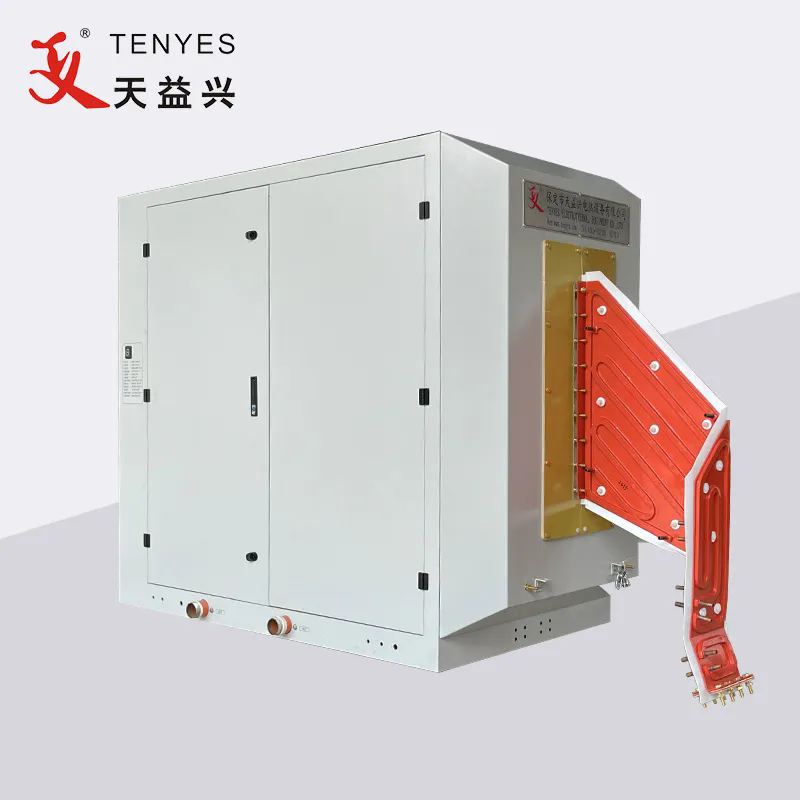What is a Solid State High Frequency Welder and How Does It Work?
2024-11-14
Welding has come a long way from its traditional methods, with advancements in technology leading to more efficient and reliable tools. One of the more specialized types of welders making waves in the industry is the Solid State High Frequency Welder. But what exactly is this device, and how does it differ from conventional welding machines? In this blog, we’ll explore the fundamentals of solid-state high-frequency welding, its advantages, and how it works.
What Is a Solid State High Frequency Welder?
A Solid State High Frequency Welder is a type of welding equipment that uses high-frequency alternating current (AC) to weld metal components together. Unlike traditional welders, which rely on transformer-based technology, a solid-state welder uses solid-state electronics to convert electrical energy. The high-frequency current is then applied to the workpieces, creating a weld through the heat generated by the resistance of the metal.
The main difference between a solid-state welder and conventional welding systems is the method used to generate and control the welding power. Solid-state welders are more compact, energy-efficient, and often more precise, making them ideal for applications requiring high-quality, fine-tuned welding.
How Does It Work?
The working principle behind the Solid State High Frequency Welder is based on the ability of solid-state electronics to generate high-frequency currents at a consistent and controlled rate. These systems use semiconductor devices, such as transistors or thyristors, to control the flow of current through the welding circuit. Here’s a simple breakdown of the process:
1. Power Conversion: The welder converts input power (usually AC) into high-frequency alternating current through solid-state circuitry. This is a more efficient method compared to older transformer-based systems.
2. High-Frequency Oscillation: The current is oscillated at a very high frequency, often in the range of 20 kHz to several MHz, which is ideal for creating precise, localized heat at the welding point.
3. Application of Current: The high-frequency current is applied to the metal surfaces, creating a resistance heat that causes the metal to melt and fuse together. The solid-state electronics allow for precise control over the heat output, ensuring consistent results.
4. Cooling and Solidification: After the weld is completed, the metal cools and solidifies, forming a strong, durable bond between the parts.
Advantages of Solid State High Frequency Welders
1. Energy Efficiency: Traditional welding systems often waste energy in the form of heat or inefficiency in converting power. Solid-state systems are much more energy-efficient due to their advanced electronic controls.
2. Precision: The ability to control the frequency and output of the welding current allows for highly precise welding, making solid-state welders perfect for delicate or fine components that require accurate, controlled heat application.
3. Compact and Durable: Solid-state welders are more compact and often more durable than their transformer-based counterparts. The absence of large, bulky components makes them easier to maintain and transport.
4. Faster Welding Process: The high-frequency currents generate heat more quickly, which can reduce welding times and increase production efficiency.
5. Less Heat-Affected Zone: Because of the precise control over the current, solid-state welders typically produce a smaller heat-affected zone (HAZ), which helps preserve the integrity of the surrounding materials.
Applications of Solid State High Frequency Welding
Due to their precision and efficiency, solid-state high-frequency welders are used in a wide range of industries, including:
- Automotive Manufacturing: For welding small, intricate components such as connectors and sensors.
- Aerospace: For welding lightweight metals like aluminum and titanium in aircraft parts.
- Electronics: For bonding delicate components like wires, microchips, and circuit boards.
- Medical Devices: In the production of medical tools and equipment where precision is critical.
Conclusion
A Solid State High Frequency Welder represents a significant leap forward in welding technology. By leveraging solid-state electronics and high-frequency currents, these machines offer better precision, energy efficiency, and reliability compared to traditional welders. Whether used in aerospace, automotive, or electronics manufacturing, the solid-state welder is a powerful tool that can deliver high-quality, consistent welds with less energy consumption and faster processing times.
For industries looking to improve production processes and meet demanding specifications, investing in solid-state high-frequency welders is a step toward a more efficient and advanced future in welding.



